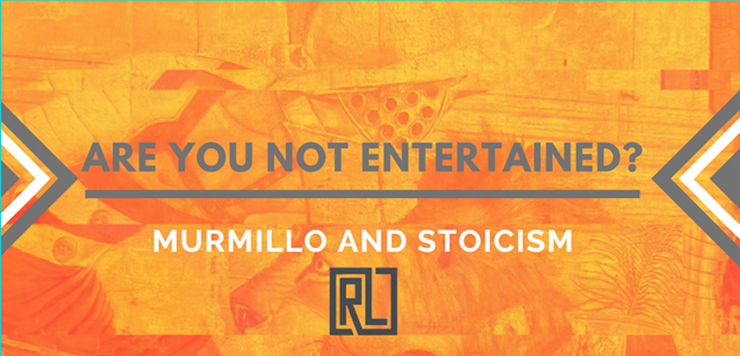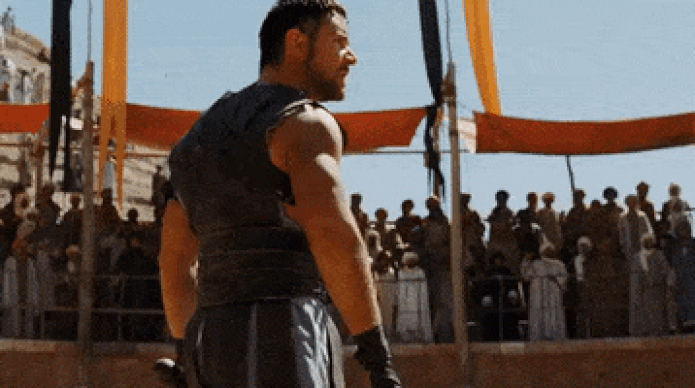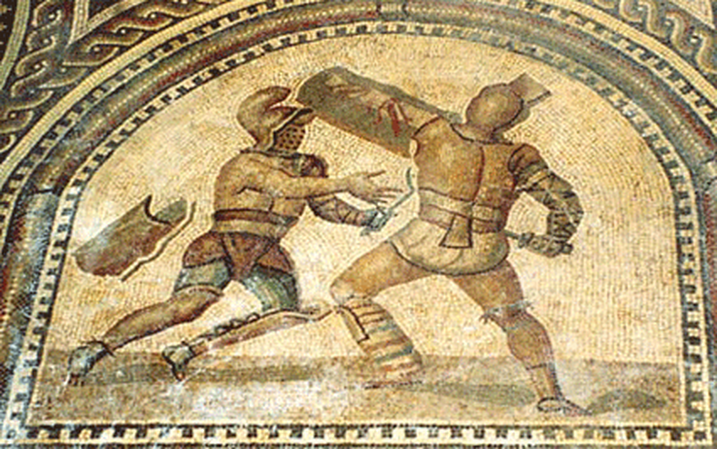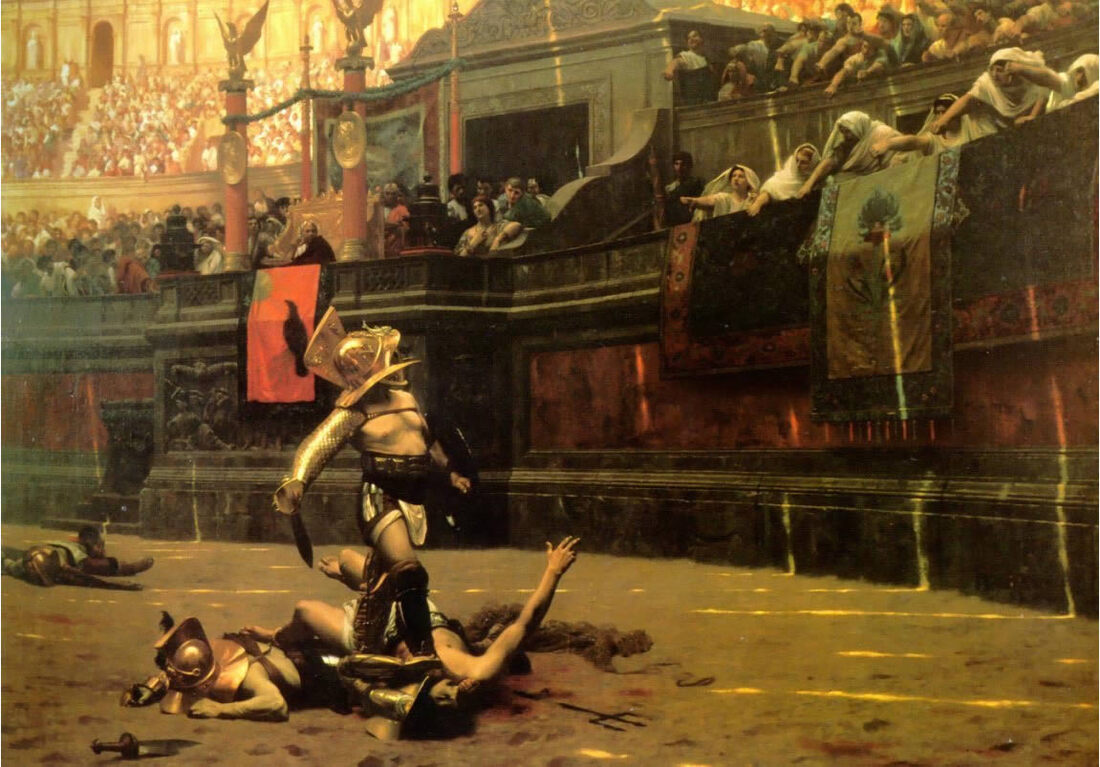|
(Disclaimer: This is not professional or legal advice. If it were, the article would be followed with an invoice. Do not expect to win any social media arguments by hyperlinking my articles. Chances are, we are both wrong). “Waste no more time arguing what a good man should be. Be One.” – Marcus Aurelius Another film that influenced me was Ridley Scott's 2000 historical action flick Gladiator. It stars Russell Crowe, who portrays Roman general Maximus Decimus Meridius, who is betrayed when Commodus, the ambitious son of Emperor Marcus Aurelius, murders his father and seizes the throne. Reduced to slavery, Maximus becomes a gladiator and rises through the ranks of the arena to avenge the murders of his family and his emperor. Despite the glaring historical inaccuracies, the film introducing me to the world of combat and Stoicism. A gladiator (Latin for "swordsman") was an armed combatant who entertained audiences in the Roman Republic and Roman Empire in violent confrontations with other gladiators, wild animals, and condemned criminals. Some gladiators were volunteers who risked their lives and their legal and social standing by appearing in the arena. Most were despised as slaves, schooled under harsh conditions, socially marginalized, and segregated even in death. Irrespective of their origin, gladiators offered spectators an example of Rome's martial ethics and, in fighting or dying well, they could inspire admiration and widespread acclaim. They were celebrated in high and low art, and their value as entertainers was commemorated in precious and commonplace objects throughout the Roman world. The origin of gladiatorial combat is open to debate. There is evidence of it in funeral rites during the Punic Wars of the 3rd century BC, and after that, it rapidly became an essential feature of politics and social life in the Roman world. Its popularity led to its use in ever more lavish and costly games. The gladiator games lasted for nearly a thousand years, reaching their peak between the 1st century BC and the 2nd century AD. The games finally declined during the early 5th century after adopting Christianity as the Roman Empire's state church in 380, although beast hunts continued into the 6th century. The murmillo (also sometimes spelled "mirmillo" or "myrmillo," or plural murmillones) was a type of Gladiator during the Roman Imperial age. The murmillo-class Gladiator was adopted in the early Imperial period to replace the earlier Gallus, named after Gaul's warriors. As the Gauls inhabiting Italy had become well integrated with the Romans by Augustus' reign, it became undesirable to portray them as enemy outsiders; the Gallus-class Gladiator thus had to be retired. As I researched more on the Myrmidon when I created our gym, I honestly conflated the name "murmillo" with "Myrmidon." Other than sounding similar, there was not a whole of of correlation. But it is not a very large leap to find middle ground between the life of as gladiator and that of a modern day amateur wrestler. Plenty of overlap between warrior cultures. The murmillo gladiator is pretty much the visual representation of what most people think of when the word Gladiator comes to mind. Armed with a Roman sword and shield and wearing leg and arm greaves, the look of the iconic murmillo was topped off with the gladiator helmet known as the Cassis Crista. The murmillo also served that purpose of almost being the favorite hometown champion, often fighting against the gladiators with Greek weaponry and armor, allowing their battles in the Colosseum to be genuinely engaging for the massive crowds. The murmillo's fighting style was suited for men with strong arms and shoulders due to carrying the shield's weight, sword, and heavy helmet. As a result, murmillos were usually tall and always very muscular. The murmillo depended on his strength and endurance to survive the battle against foes who were more suited to attacking. The tower shield gave him an edge in defense, and the gladius enabled him to thrust and swing at his enemies when in close range. The murmillones were also trained to kick their enemies with the thick padding worn around their legs. Murmillo wore a loincloth and belt, the right arm protected by a manica of tied linen and the left leg by a short greave. The curved rectangular shield and straight sword that both carried were similar to those used by the Roman soldier. It is the helmet of the murmillo, with its high angular crest and a broad curved brim that is so distinctive. As they were suited to defensive attacks, if their foe were to over-commit on an attack, the powerful murmillo would be able to launch an effective counterstrike with their gladius. Additionally, if anyone tried to get too close, the murmillo could use their powerful upper body to push them away using their shield as a buffer, hoping to knock their enemy off their feet. Examples of pairing murmillones with other gladiator types can be seen in frescoes and graffiti in Pompeii. In one well-preserved example, a murmillo named Marcus Atillus, who is credited with one match and one victory, is depicted standing over the defeated figure of Lucius Raecius Felix, a gladiator. He is credited with 12 matches and 12 victories. His opponent is shown kneeling, disarmed, and unhelmeted. The graffiti records that Felix survived the fight and was granted his freedom. What is the direct correlation between the philosophy of Stoicism and the Murmillo? Well, not much directly, save for the loose examples given in Ridley Scott's Gladiator. Understanding the significant themes in Stoicism can help with the development of emotional intelligence. Stoicism is a philosophy made famous by one of Gladiator's main characters, Marcus Aurelius ( even though it was initially founded by Zeno of Citium in the early 3rd century BC and was heavily influenced by Socrates). Stoicism is defined as the ability to endure pain or hardship without complaints or any display of feelings. However, upon more in-depth analysis, one can find some central themes in Stoicism that are directly related to athletes' emotional intelligence development.
The central theme in Stoicism is to recognize what is under one's control. Wrestlers know that they must focus only on what they can control. Stoics maintain that it is useless to react to things that we cannot control. In sports, many variables are not governed by the athletes. Letting go of these and focusing only on acting on events that one can control can be very helpful. Misplacing emotions on things that cannot be controlled are exhausting and unnecessary. Emotional energy, such as anger, is better used when directed to controllable action. Athletes can improve their performance by not wasting energy on trying to change things they cannot control. Another one of the critical principles of Stoicism is to understand one's emotions. This is important for athletes because sports can be emotional in many ways. Feelings are caused by many events and can shift quickly. Sometimes mastering one's emotions is as easy as understanding them. Mastery of emotions does not mean living without any feelings. It means that it feels like anger and sadness will not be misplaced on things we cannot control. It also means that we learn to replace our negative feelings with positive emotions such as calm and contentment. We are often frustrated when we try to control things, but when we let go of this need for control, we can experience more joy. By not trying to control what we can't control, we learn to control what we can control. The final principle of Stoicism focuses on conforming to reality. To make the best out of all situations, one must have a realistic outlook. Setting realistic goals and expectations is necessary, and trying to make a reality to conform to our desires is futile. Ultimately, Stoics make the best out of every situation, even loss, and tragedy. They always find the lessons to be learned and meaningful action to be taken as a result. They find new opportunities in everything. RESOURCES Gladiator Murmillo Murmillo-Wikipedia Murmillo Gladiator GLADIATOR Emotional Intelligence and Stoicism in Sports
0 Comments
Leave a Reply. |
AuthorRyan Lancaster wears many hats. Dive into his website to learn about history, sports, and more! Archives
July 2024
Categories |





 RSS Feed
RSS Feed